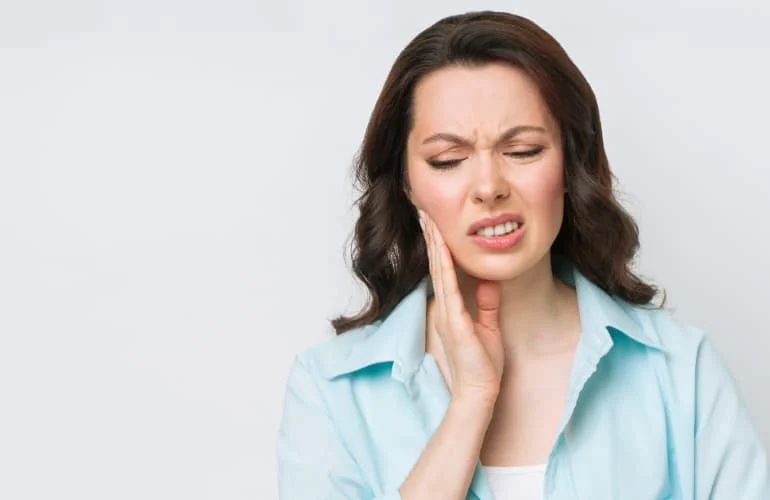What is bruxism? The answer to this question can be defined as the unconscious act of clenching or grinding the teeth while sleeping at night or while awake during the day. So, what are the underlying causes of this condition and the treatment methods?
What Is Bruxism? How Is It Defined?
Bruxism is the unconscious act of clenching or grinding the teeth. This can occur both while awake and during sleep. Common causes of bruxism include stress, anxiety, lack of sleep, or abnormalities in the jaw structure.
Causes and Development of Bruxism
Bruxism, commonly known as teeth grinding or clenching, is a condition that many people experience unknowingly at night or during the day. The development process is quite complex and may be based on multiple factors. Stress, anxiety, and psychological tension are among the most common causes of bruxism. Factors such as a busy lifestyle, work, or personal problems lead to excessive tension in the jaw muscles and friction between the teeth. In addition, sleep disorders, side effects of certain medications, improper tooth structure, or jaw misalignment can also play a role in the development of bruxism.
Symptoms and Diagnosis of Bruxism
Although bruxism is widely known, many people are not fully aware of its symptoms. Tooth wear and fractures, tightness, and sensitivity are among the signs of bruxism. Patients often complain of pain and stiffness in the jaw and facial area upon waking up in the morning. Over time, clicking or a feeling of tightness in the jaw joints may also occur. The grinding sound is often noticed by partners. During the diagnostic process, the dentist examines the patient’s mouth in detail. Tooth wear patterns, gum condition, and jaw movements are carefully checked.
If necessary, X-rays or other imaging methods are used to assess the jaw joints and tooth structures in more detail. Once a definitive diagnosis is made and the cause of bruxism is determined, appropriate treatment methods are applied with the goal of restoring the patient’s comfort and a healthy oral structure.
How to Prevent Night Bruxism?
Night bruxism is known as the unconscious act of clenching or grinding the teeth during sleep, and this condition can damage both the teeth and the jaw joint. There are several recommended methods to prevent night bruxism. First of all, reducing stress plays a key role in prevention. Meditation, deep breathing techniques, or relaxation exercises, especially before bedtime, can help reduce bruxism. In addition, changing your sleeping position or using a different pillow can also lessen the effects of night bruxism.
Also, using a night guard can minimize the damage that night bruxism may cause to your teeth. A night guard does not stop teeth clenching but reduces its harmful effects. If these methods do not help, it is recommended to consult a dentist to learn more about advanced treatment options.
What Is the Purpose of a Bruxism Splint and Bruxism Appliance?
A bruxism splint, also known as a night guard or bruxism appliance, is a treatment method recommended for individuals with the habit of clenching or grinding their teeth. Although it can be made of transparent or semi-transparent, hard or semi-soft plastic material, prepared specifically for the patient, semi-soft ones are not preferred because they have been proven to cause more harm than benefit.
The main function of the bruxism splint is to create a barrier between the upper and lower teeth, preventing them from grinding against each other and thus avoiding wear. At the same time, it can help reduce pressure on the jaw joint, preventing joint pain and headaches. Regular use of this splint prevents tooth wear while also helping the jaw muscles relax, minimizing the harmful effects of clenching and grinding. Following your dentist’s recommendation to wear this splint while sleeping at night is an effective step in protecting yourself from the harmful effects of bruxism.
What Are Bruxism Exercises?
Exercises for bruxism, meaning teeth clenching or grinding, are designed to relax the jaw muscles, reduce tension, and encourage proper jaw positioning. These include the tongue positioning exercise, where the tongue is placed against the palate while the upper and lower teeth are slightly separated. Stretching exercises such as slowly moving the jaw from side to side also fall into this category. Another exercise involves slowly opening the mouth to its widest position and holding it for a few seconds to stretch the jaw muscles. Such bruxism exercises should be done regularly to relax tense jaw muscles and maintain correct jaw positioning.
Does Bruxism Botox Work?
Bruxism botox, also known as masseter botox, is an innovative treatment method that has been used in recent years for clenching and grinding problems. Botox is a toxin used to relax muscles. In bruxism treatment, botox injections are applied to the overactive and tense jaw muscles, particularly the masseter muscle. This helps prevent excessive contractions, reducing clenching and grinding. Many patients have reported reduced pain and headaches, less tooth wear, and improved quality of life. However, the effect of bruxism botox is not permanent and needs to be repeated at certain intervals. It may also not be suitable for everyone. Therefore, individuals considering bruxism botox should consult a dentist or specialist first, and it must be applied by a truly experienced professional.
How Can Bruxism Be Treated?
To treat bruxism, it is important to address its root causes. First, adopting stress-reducing methods, practicing relaxation techniques, and doing meditation can help. Second, changing your sleeping position or improving your sleep habits can reduce its severity. Additionally, regular check-ups with your dentist to detect bite anomalies or other potential problems can ease the condition. Early diagnosis of the causes and symptoms of bruxism, along with working with a specialist to determine the most appropriate approach, is the key answer to the question of how bruxism can be resolved.
Bruxism Definitive Solution: How Can You Overcome the Problem Permanently?
Bruxism, meaning teeth grinding and clenching, is a problem faced by many individuals, and different methods are used in its treatment. Here are some commonly used methods in the treatment of bruxism:
Occlusal Splint or Night Guard:
Also known as a bruxism splint, these appliances are usually worn at night and create a barrier between the upper and lower teeth, preventing them from grinding against each other. They also help keep the jaw in a comfortable position.
Biofeedback:
Electronic monitoring produces an audible or visual signal when the patient clenches or grinds their teeth. This provides guidance to help change the habit.
Cognitive Behavioral Therapy (CBT):
If stress or anxiety triggers bruxism, CBT can help patients understand how they respond to these triggers and develop coping strategies.
Botox Injections:
When injected into the jaw muscles, Botox can prevent excessive contractions and reduce the severity of bruxism.
Prescription Medications:
Some muscle relaxants and anxiolytic medications are known to be used in bruxism treatment, temporarily helping to reduce symptoms. However, this method is usually considered a last resort when other treatments do not provide results.
Dental Correction:
If the underlying cause of bruxism is an irregular bite, the dentist may attempt to correct or protect the teeth to address the problem.
Lifestyle Changes:
Reducing alcohol, caffeine, and nicotine consumption, learning stress management techniques, and engaging in regular exercise can help reduce the severity of bruxism. To determine which of these methods is most appropriate, it is important to undergo a comprehensive evaluation with a dentist or oral and maxillofacial surgeon. However, it is worth noting that none of these methods can always be considered a definitive solution for bruxism.
Bruxism Treatment: Which Methods Are Used?
The approach to treating bruxism varies depending on the individual’s specific condition and the severity of the bruxism. Different treatment approaches may be effective for different individuals. In particular, a night guard is beneficial in minimizing at least the negative effects caused by bruxism. In addition, muscle relaxant medications and, in some cases, Botox injections can also be helpful in reducing its effects. Behavioral therapies, on the other hand, offer effective methods for understanding the triggers of bruxism and developing coping strategies. In the long term, the most effective treatment approach may include a combination of both physical and behavioral treatment methods.

